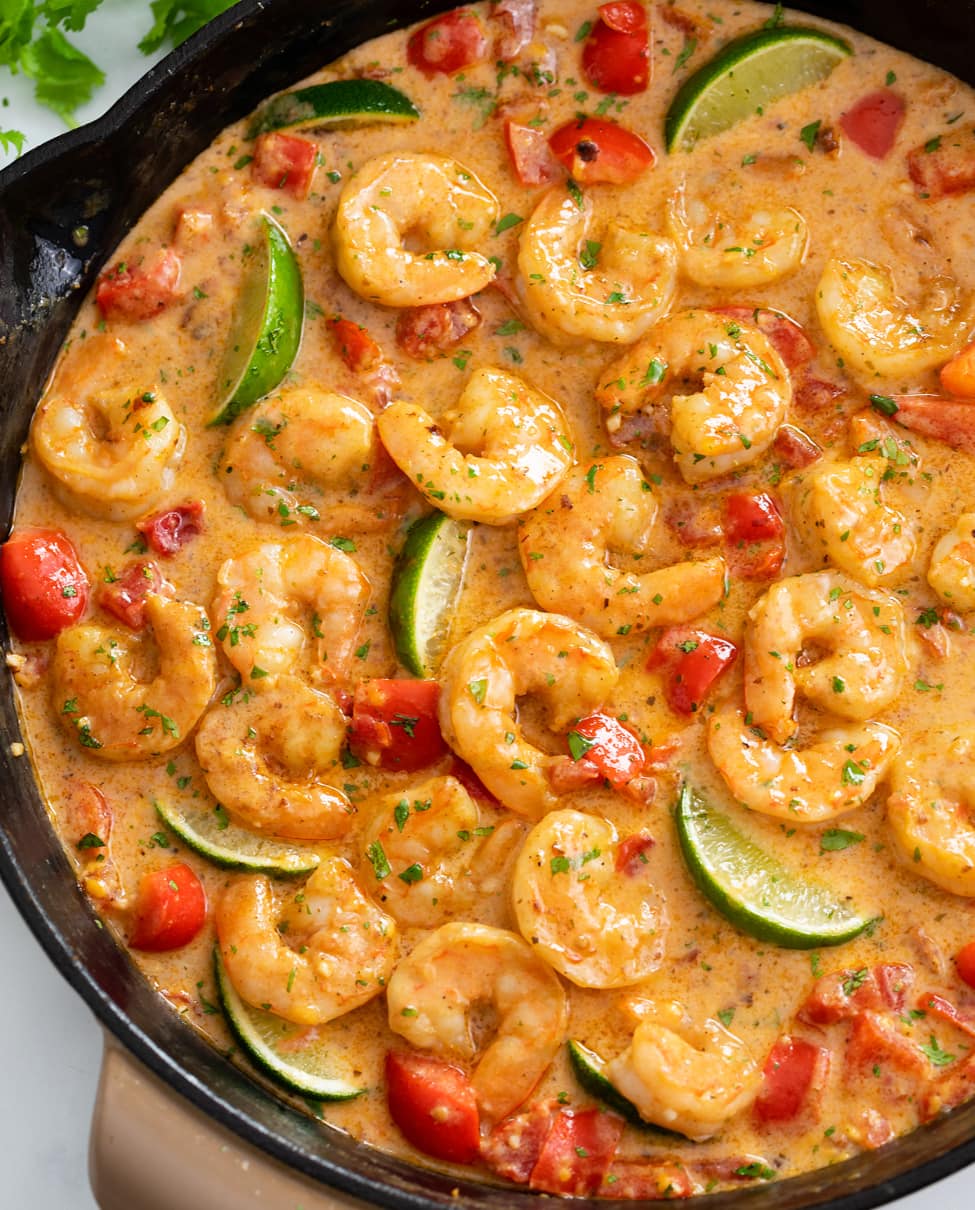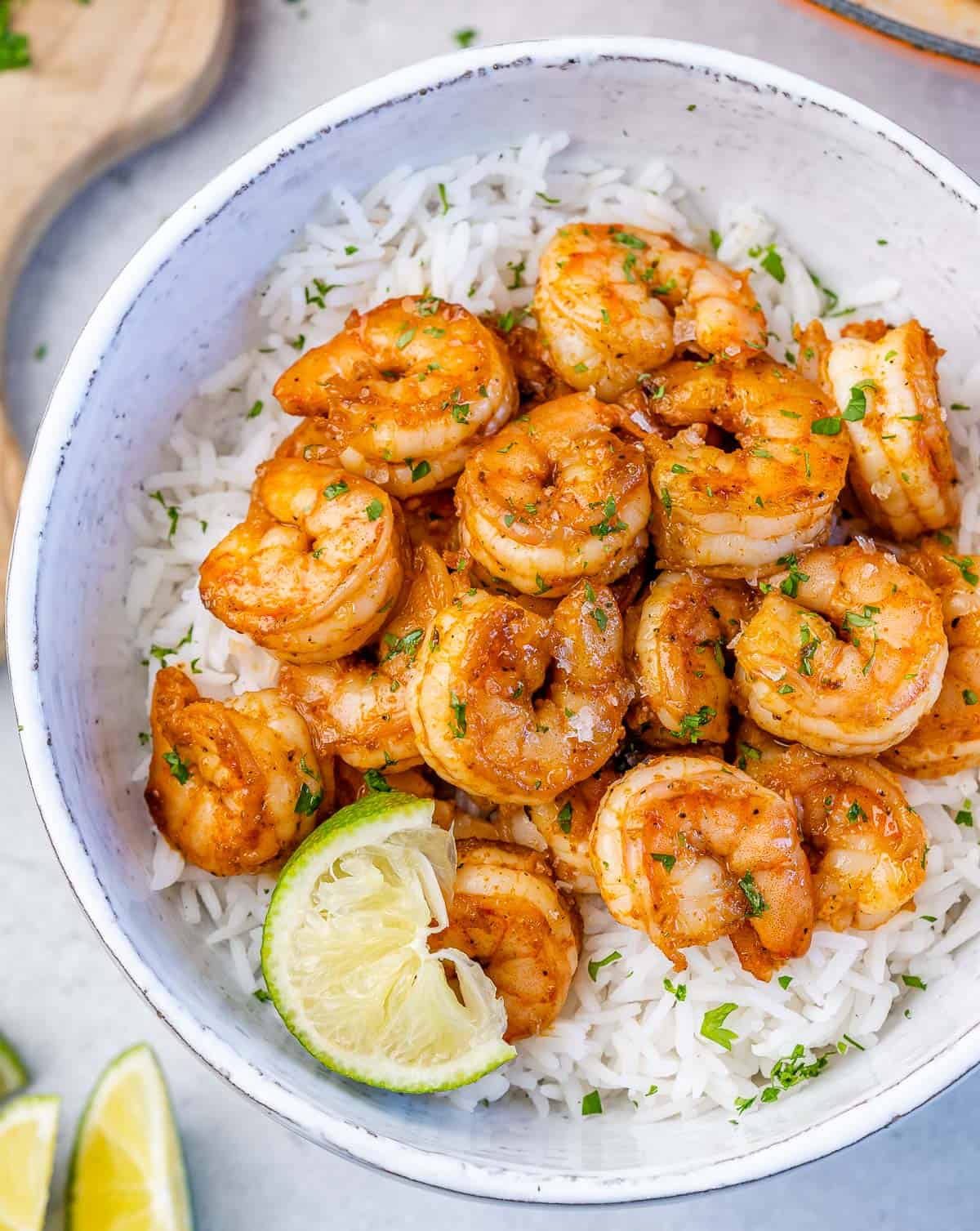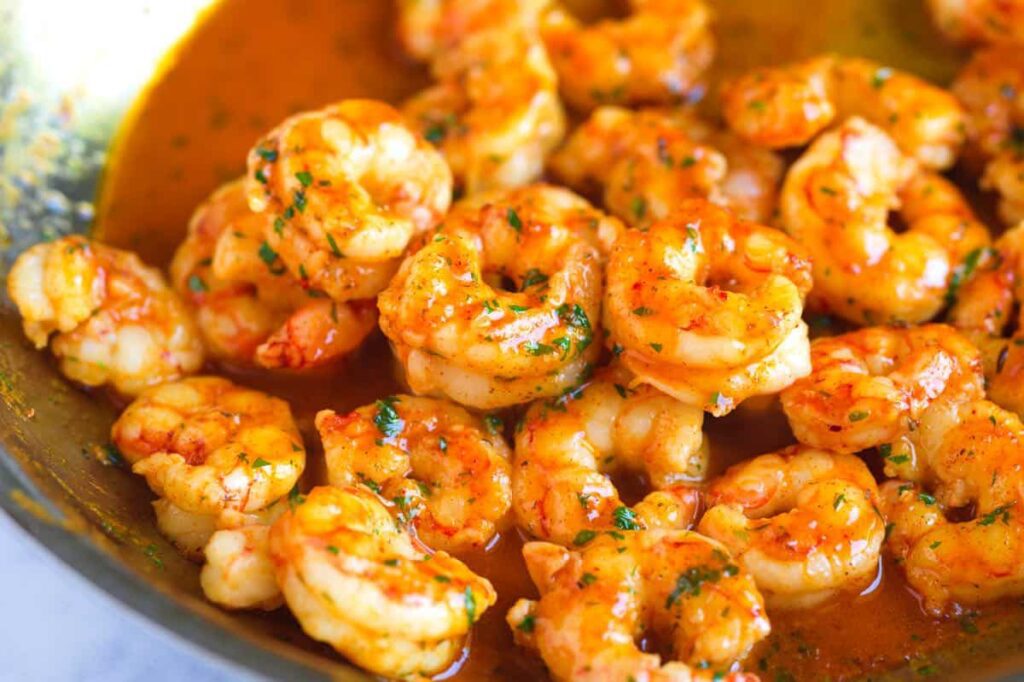Cajun cuisine, with its rich history and vibrant flavors, has captivated palates worldwide. At its core lies a culinary philosophy that celebrates fresh, local ingredients and bold, aromatic spices. Among the myriad of dishes that define this beloved culinary tradition, Cajun Shrimp stands out as a true testament to its essence. This dish, characterized by succulent shrimp bathed in a fiery, savory sauce, embodies the spirit of Louisiana – a blend of French, Spanish, African, and Native American influences that have converged to create a unique and unforgettable gastronomic experience.
This comprehensive guide will delve into the art of preparing authentic Cajun Shrimp, providing a detailed recipe that ensures a perfect balance of heat and flavor. We will explore the essential ingredients, the techniques that elevate this dish from good to extraordinary, and tips for serving it as part of a complete meal. Whether you are a seasoned chef or a curious home cook, prepare to embark on a flavorful journey that will transport your taste buds straight to the bayous of Louisiana.
The Rich Heritage of Cajun Cuisine
To truly appreciate Cajun Shrimp, it’s essential to understand the culinary landscape from which it emerged. Cajun cuisine is the hearty, rustic fare of the Acadians, French colonists who settled in Louisiana after being expelled from Canada in the mid-18th century. These resourceful people adapted their traditional French cooking methods to the abundant ingredients of their new home – the swamps, bayous, and fertile lands of South Louisiana.
The foundation of Cajun cooking rests on several key principles that make it distinctive from other regional American cuisines. The famous “Holy Trinity” of onions, celery, and bell peppers forms the aromatic base for countless dishes, while the art of making roux – a mixture of fat and flour cooked to varying degrees of darkness – provides the thickening and flavoring agent for gumbos, etouffées, and gravies.

Spices play a crucial role in Cajun cuisine, with paprika, cayenne pepper, garlic powder, onion powder, and dried herbs like thyme and oregano creating the bold, often spicy flavors that the cuisine is known for. The emphasis on one-pot meals reflects the practical and communal nature of Acadian life, while the use of local ingredients such as fresh seafood, pork, game meats, rice, and local vegetables showcases the region’s natural abundance.
Understanding the Star Ingredient: Shrimp
Shrimp holds a special place in Louisiana’s culinary tradition, and for good reason. The Gulf of Mexico provides some of the finest shrimp in the world, with varieties ranging from sweet white shrimp to robust brown shrimp. When selecting shrimp for your Cajun preparation, size matters significantly. Large or extra-large shrimp (21-25 count or 16-20 count per pound) are ideal because they provide the best texture and presentation while being substantial enough to hold up to the bold Cajun seasonings.
Fresh shrimp should have a mild, ocean-like smell and firm texture. If fresh shrimp isn’t available, high-quality frozen shrimp can be an excellent substitute. When using frozen shrimp, proper thawing is crucial – place them in a colander under cold running water until completely thawed, then pat them thoroughly dry with paper towels. This step is essential because excess moisture will cause the shrimp to steam rather than sear, preventing the development of that desirable golden-brown crust that adds both flavor and visual appeal to the dish.
The Art of Cajun Seasoning
The heart of any great Cajun Shrimp lies in its seasoning blend. While commercial Cajun seasonings are readily available, creating your own blend allows you to control the heat level and flavor profile to suit your preferences. A traditional Cajun seasoning typically includes paprika as the base, which provides both color and a mild, sweet pepper flavor. Cayenne pepper brings the heat, while garlic powder and onion powder add depth and savory notes.

Dried herbs such as oregano and thyme contribute earthy, aromatic qualities that complement the seafood beautifully. Black pepper adds a sharp bite, while salt enhances all the other flavors. The key to a great Cajun seasoning is balance – you want enough heat to make the dish exciting without overwhelming the delicate flavor of the shrimp. Start with less cayenne and adjust to taste, remembering that you can always add more heat, but you can’t take it away.
Essential Cooking Techniques
Cooking Cajun Shrimp is a quick process that requires attention and timing. The goal is to achieve perfectly cooked shrimp with a beautiful golden-brown exterior while maintaining a tender, juicy interior. The process begins with proper preparation – ensuring your shrimp are completely dry and evenly coated with seasoning.
Heat management is crucial when cooking shrimp. A large skillet or cast-iron pan heated to medium-high temperature provides the ideal cooking surface. The addition of butter not only adds richness but also helps achieve that beautiful golden color on the shrimp. When the butter is melted and sizzling, it’s time to add the garlic, which should be sautéed just until fragrant – about 30 seconds. Burning the garlic will introduce bitter flavors that can ruin the dish.
The shrimp should be added to the pan in a single layer, avoiding overcrowding which can lower the pan temperature and lead to steaming rather than searing. Cook for 1-2 minutes per side, watching for the telltale signs of doneness: the shrimp will turn pink and opaque, and they’ll curl slightly. Overcooking is the enemy of good shrimp – they become tough and rubbery very quickly, so timing is everything.
Perfect Serving Suggestions
Cajun Shrimp’s versatility makes it suitable for various serving styles and occasions. The classic presentation involves serving the shrimp over a bed of fluffy white rice, which absorbs the flavorful pan juices and provides a neutral base that allows the bold Cajun flavors to shine. For a more substantial meal, dirty rice – rice cooked with ground meat, vegetables, and seasonings – creates a complete one-dish meal that’s deeply satisfying.

Pasta lovers can toss the Cajun Shrimp with cooked linguine, fettuccine, or penne for a quick and delicious dinner. The addition of a light cream sauce can create a restaurant-quality dish that’s perfect for entertaining. For those seeking lighter options, the shrimp pairs beautifully with steamed vegetables such as broccoli, asparagus, or green beans.
The dish also works wonderfully as an appetizer when served with crusty French bread for dipping in the flavorful pan juices, or arranged on a platter with toothpicks for easy serving at parties. For a fun, casual meal, the shrimp can be used as a filling for tacos or wraps, accompanied by shredded lettuce, diced tomatoes, and a cooling sour cream or aioli.
Nutritional Benefits and Health Considerations
Beyond its incredible flavor, Cajun Shrimp offers numerous nutritional benefits that make it an excellent choice for health-conscious diners. Shrimp is an outstanding source of lean protein, providing all essential amino acids needed for muscle growth and repair while being remarkably low in calories – a 3-ounce serving contains only about 84 calories.
The nutritional profile of shrimp is impressive, containing high levels of selenium, an important antioxidant that supports immune function and thyroid health. Vitamin B12, crucial for nerve function and red blood cell formation, is abundant in shrimp, as is phosphorus, which supports bone health and energy metabolism. The presence of iodine makes shrimp particularly beneficial for thyroid function.
Shrimp also contains omega-3 fatty acids, particularly EPA and DHA, which are known for their anti-inflammatory properties and cardiovascular benefits. These healthy fats support brain health, may help reduce the risk of heart disease, and can contribute to improved mood and cognitive function.
Professional Tips for Perfect Results
Achieving restaurant-quality Cajun Shrimp at home requires attention to several key details that can make the difference between good and extraordinary results. First and foremost, never overcook the shrimp. This cannot be emphasized enough – shrimp cook incredibly quickly, and the window between perfectly done and overcooked is very narrow. Watch for the color change from translucent gray to pink and opaque, and remove them from heat immediately.

Temperature control is equally important. Your skillet should be hot enough to create a good sear but not so hot that the butter burns or the garlic becomes bitter. If you notice the butter browning too quickly, reduce the heat slightly. The sizzling sound when you add the shrimp is a good indicator that your pan is at the right temperature.
Seasoning distribution is another crucial factor. Toss the shrimp with the Cajun seasoning in a bowl before cooking to ensure even coverage. This method is more effective than sprinkling seasoning into the pan, which can result in uneven flavor distribution.
Don’t overcrowd the pan – if you’re cooking a large quantity of shrimp, it’s better to cook them in batches. Overcrowding lowers the pan temperature and prevents proper searing, resulting in steamed rather than sautéed shrimp.
Finally, finish the dish with fresh lemon juice and herbs off the heat. The acid from the lemon brightens the rich, spicy flavors and adds a fresh note that balances the dish perfectly. Fresh parsley or green onions provide color and a mild, fresh flavor that complements the bold Cajun spices.
Variations and Adaptations
While traditional Cajun Shrimp is perfect as is, there are several variations that can add interest and accommodate different preferences or dietary needs. For those who prefer less heat, reduce the cayenne pepper in the seasoning blend and add more paprika for color and mild pepper flavor. Conversely, heat lovers can increase the cayenne or add a pinch of red pepper flakes for extra fire.
A popular variation involves adding a splash of white wine or chicken broth to the pan after cooking the shrimp, creating a light sauce that’s perfect for serving over rice or pasta. This technique, known as deglazing, also helps capture any flavorful browned bits from the bottom of the pan, intensifying the overall flavor of the dish.
For a richer preparation, some cooks add a tablespoon of heavy cream at the end of cooking, creating a luxurious sauce that coats the shrimp beautifully. This version is particularly popular when serving the dish over pasta.
Those following specific dietary restrictions can easily adapt the recipe. For dairy-free versions, substitute the butter with olive oil or coconut oil. The cooking method remains the same, though the flavor profile will be slightly different. For those watching sodium intake, use a low-sodium Cajun seasoning blend or make your own with reduced salt content.
Storage and Reheating Guidelines
While Cajun Shrimp is best enjoyed immediately after cooking, proper storage and reheating techniques can help you enjoy leftovers safely and deliciously. Cooked shrimp should be refrigerated within two hours of cooking and can be stored in the refrigerator for up to three days in an airtight container.
When reheating, gentle methods work best to prevent the shrimp from becoming tough and rubbery. The microwave can be used, but use 50% power and heat in 30-second intervals, stirring between each interval. A better method is to reheat gently in a skillet over low heat with a small amount of butter or oil, just until warmed through.
Freezing cooked shrimp is possible but not recommended, as the texture can become mushy upon thawing. If you must freeze leftovers, use them in dishes where texture is less critical, such as in gumbo or jambalaya.

Cajun Shrimp
Ingredients
Method
- If using frozen shrimp, thaw them completely under cold running water. Pat the shrimp thoroughly dry with paper towels to remove excess moisture.
- In a medium bowl, toss the dried shrimp with Cajun seasoning until evenly coated. Set aside.
- Heat a large skillet or cast-iron pan over medium-high heat. Add the unsalted butter and let it melt completely.
- Add the minced garlic to the melted butter and sauté for about 30 seconds until fragrant. Be careful not to burn the garlic.
- Add the seasoned shrimp to the skillet in a single layer. Cook for 1-2 minutes per side, or until the shrimp turn pink and opaque. Do not overcook.
- Remove the skillet from heat. Squeeze fresh lemon juice over the cooked shrimp and sprinkle with chopped fresh parsley.
- Serve immediately over rice, pasta, or with your favorite side dishes. Enjoy!
Notes
Conclusion
Cajun Shrimp represents the very best of Louisiana’s culinary tradition – bold flavors, simple techniques, and ingredients that celebrate the region’s natural abundance. This dish embodies the spirit of Cajun cooking: taking humble ingredients and transforming them into something extraordinary through the skillful use of spices and proper technique.
The beauty of Cajun Shrimp lies not only in its incredible flavor but also in its accessibility. With just a few ingredients and basic cooking skills, anyone can create a dish that rivals the best restaurants in New Orleans. The key is understanding the importance of each component – from the quality of the shrimp to the balance of the seasoning blend to the precision of the cooking technique.
Whether you’re cooking for a weeknight dinner or entertaining guests, Cajun Shrimp delivers satisfaction and excitement in every bite. Its versatility makes it suitable for various occasions and serving styles, while its nutritional benefits make it a smart choice for health-conscious diners.
As you embark on your own Cajun Shrimp cooking journey, remember that practice makes perfect. Don’t be afraid to adjust the seasoning to suit your taste preferences, and pay attention to the visual and aromatic cues that indicate when the shrimp are perfectly cooked. With time and experience, you’ll develop the intuitive understanding that separates good cooks from great ones.
Most importantly, embrace the spirit of Cajun cooking – it’s about more than just following a recipe. It’s about understanding ingredients, respecting traditions, and creating food that brings people together around the table. In the heart of Louisiana, food is love, and Cajun Shrimp is a perfect expression of that philosophy.



